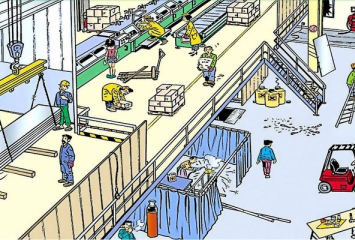

Work hazard management is the process of finding, analyzing, and controlling dangers in the workplace to ensure the health and safety of employees and others. Employers are responsible for eliminating or minimizing hazards and implementing control measures to limit the risk of accidents, injuries, and diseases. Work hazard management consists of several processes, including hazard identification, risk assessment, installation of control measures, and ongoing review.
- Raising Awareness: Educate employees, managers, and supervisors about workplace dangers and their potential impact on health and safety.
- Understanding Hazards: Provide information and abilities for identifying, assessing, and comprehending many types of hazards, such as physical, chemical, biological, and psychosocial risks.
- Prevention and Remediation: Emphasize the ideas and techniques for avoiding and reducing workplace dangers. This encompasses approaches to danger detection, assessment, prevention, and remediation.
- Risk Management: Emphasize the use of risk management principles to predict, evaluate, and control dangers. This entails gathering and analyzing information and data to detect workplace trends and challenges.
- Compliance with legislation: Ensure that participants understand and follow all applicable health and safety legislation and standards.
- Creating a Safety Culture: Promote a safe work environment. This includes encouraging active participation of workers, managers, and supervisors in the formulation and implementation of safety programs.
- Encourage continual improvement in safety and health programs by creating goals, monitoring performance, and assessing results.
- Effective Communication: Stress the need of clear communication in recognizing and managing hazards. This includes conveying the results of hazard assessments and investigations to the appropriate stakeholders.
- Introduction to Job Hazard Analysis - Provides an introduction to job hazard analysis and covers topics such as confined space safety, hazard communication, and bloodborne pathogens in the workplace.
- Hazard Management in the Workplace - Discusses common workplace hazards, techniques to control hazards, and how to carry out a risk assessment to create a safe and healthy work environment.
- Hazard Control - A hazard control program consists of steps necessary to protect workers from exposure to substances or systems. This program includes training, procedures to monitor worker exposure, and outlining methods used to control exposure and monitor their effectiveness.
- Identification, assessment, prevention, and remediation of physical, chemical, and biological hazards in typical workplaces.
- Workers in the field: This includes individuals who work in various industries and environments where hazards are present.
- Management team and executive team members of an organization.
- Employees who handle hazardous materials: Hazard communication training is often required for employees who handle hazardous materials.